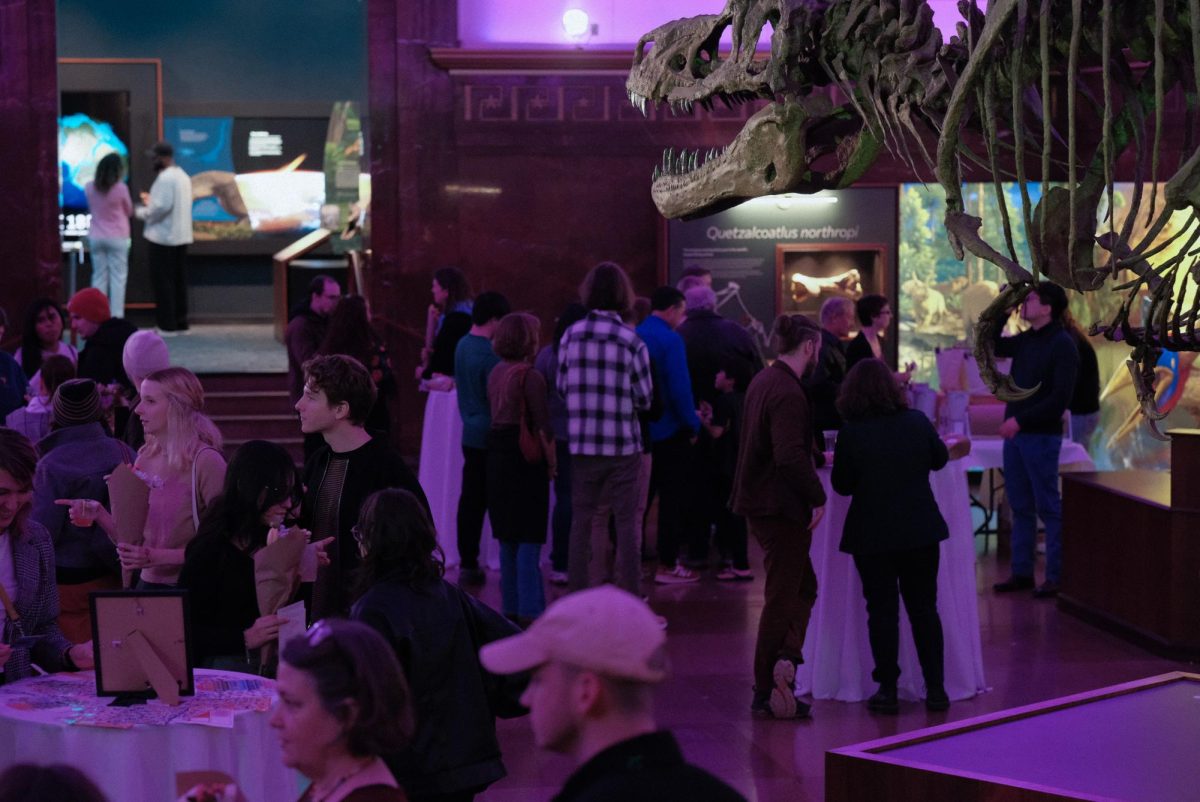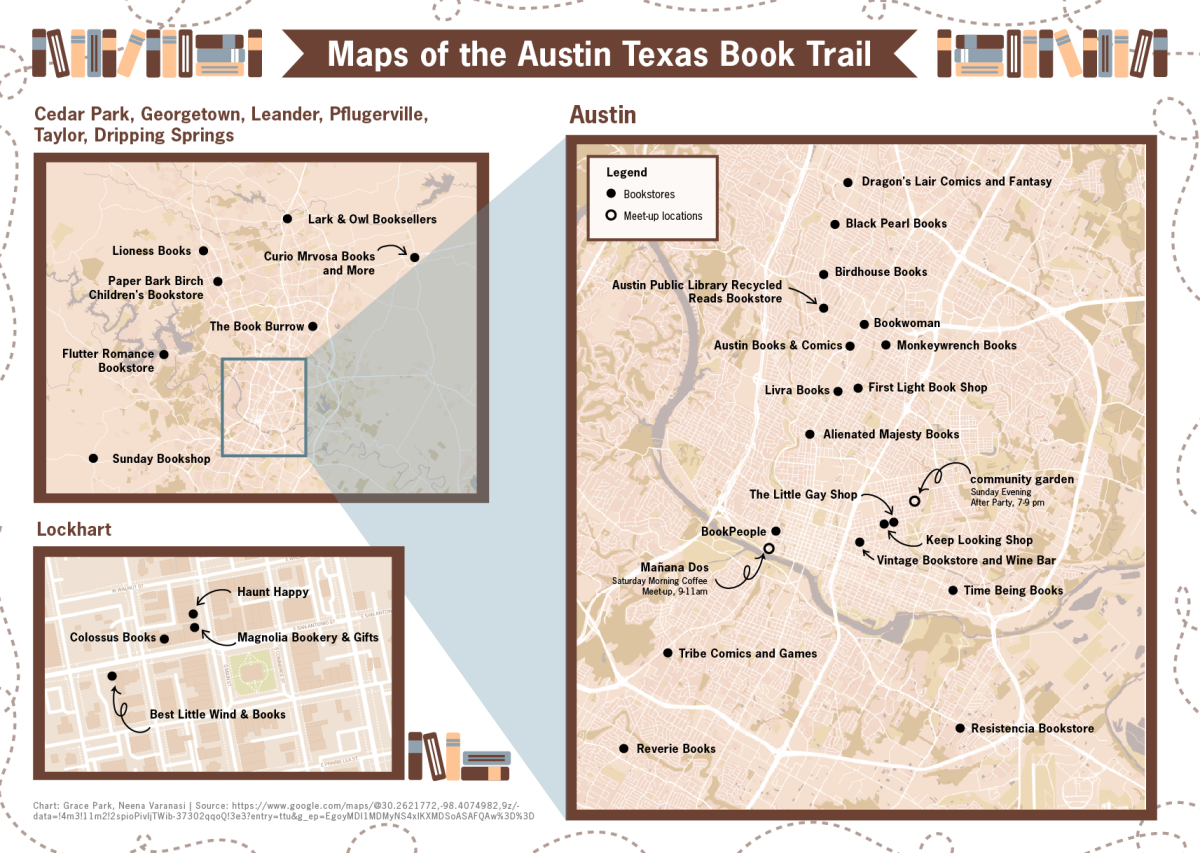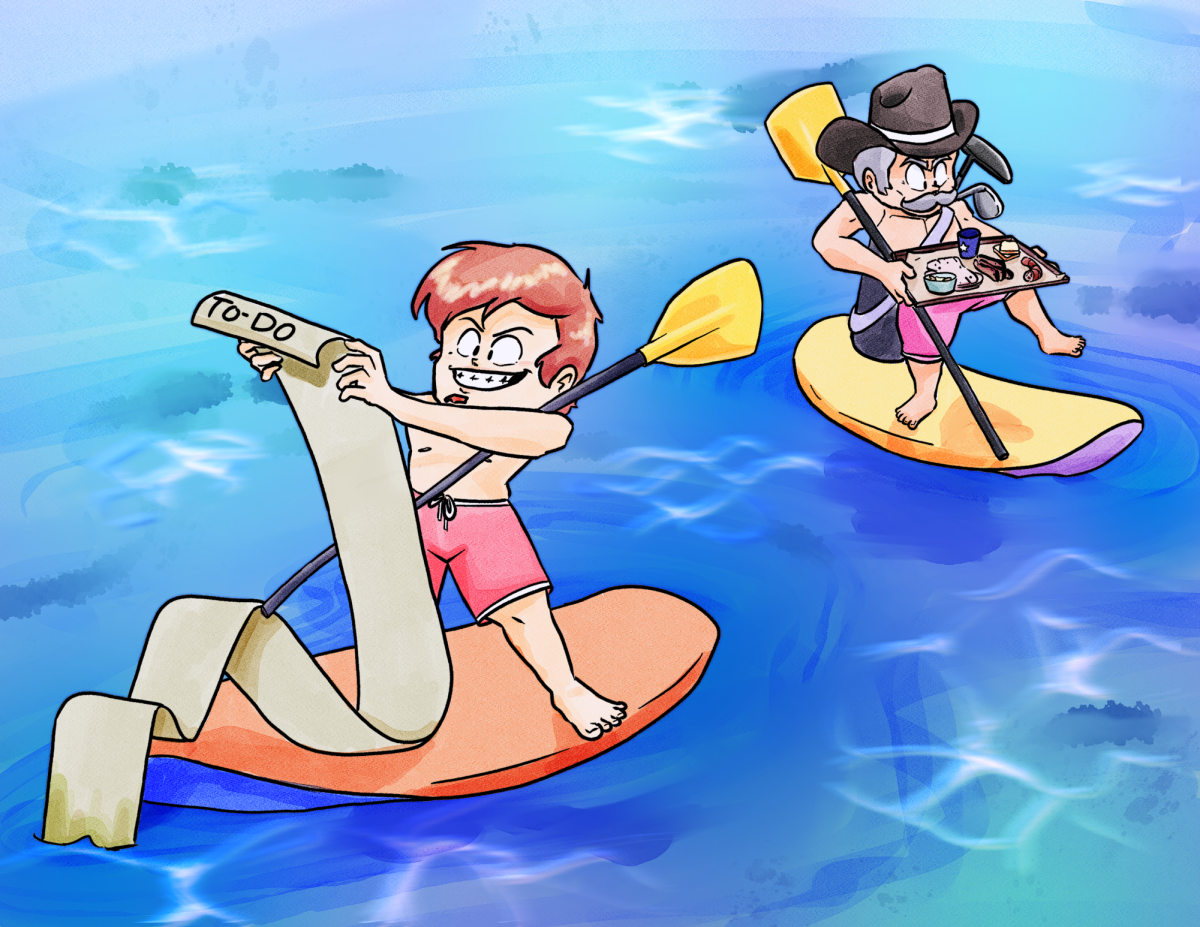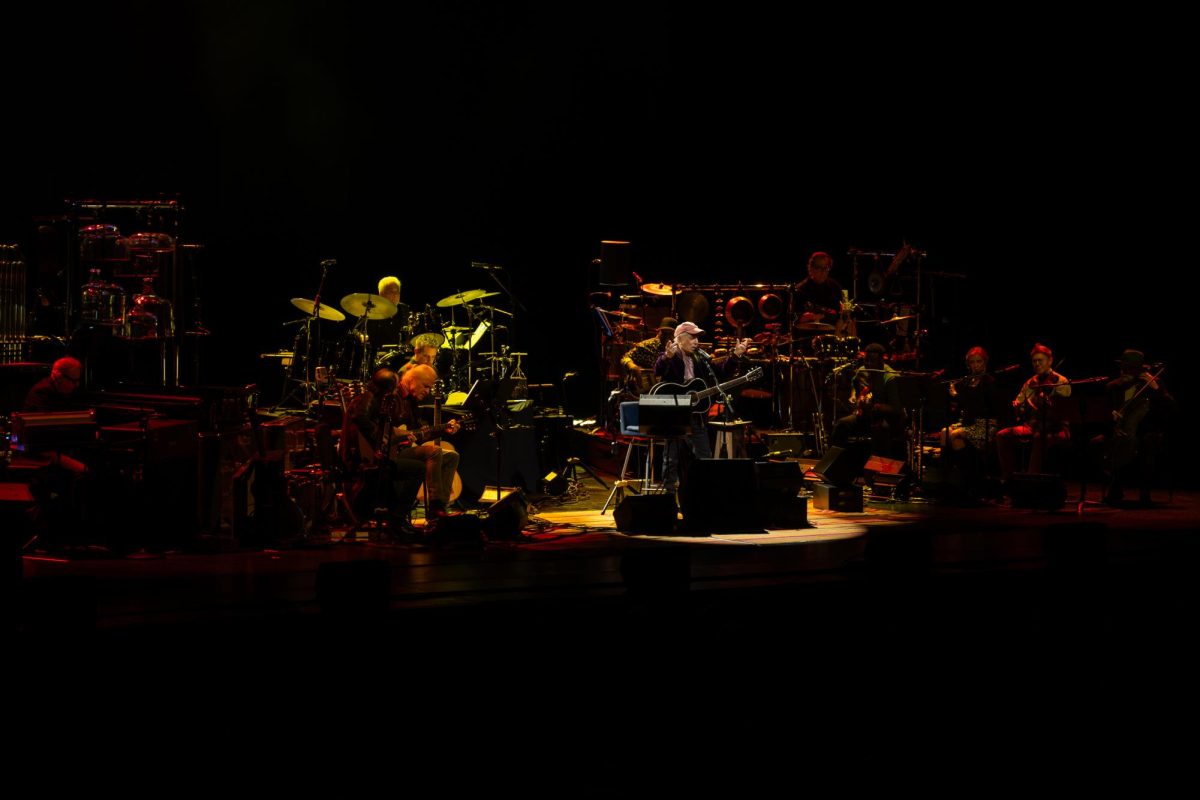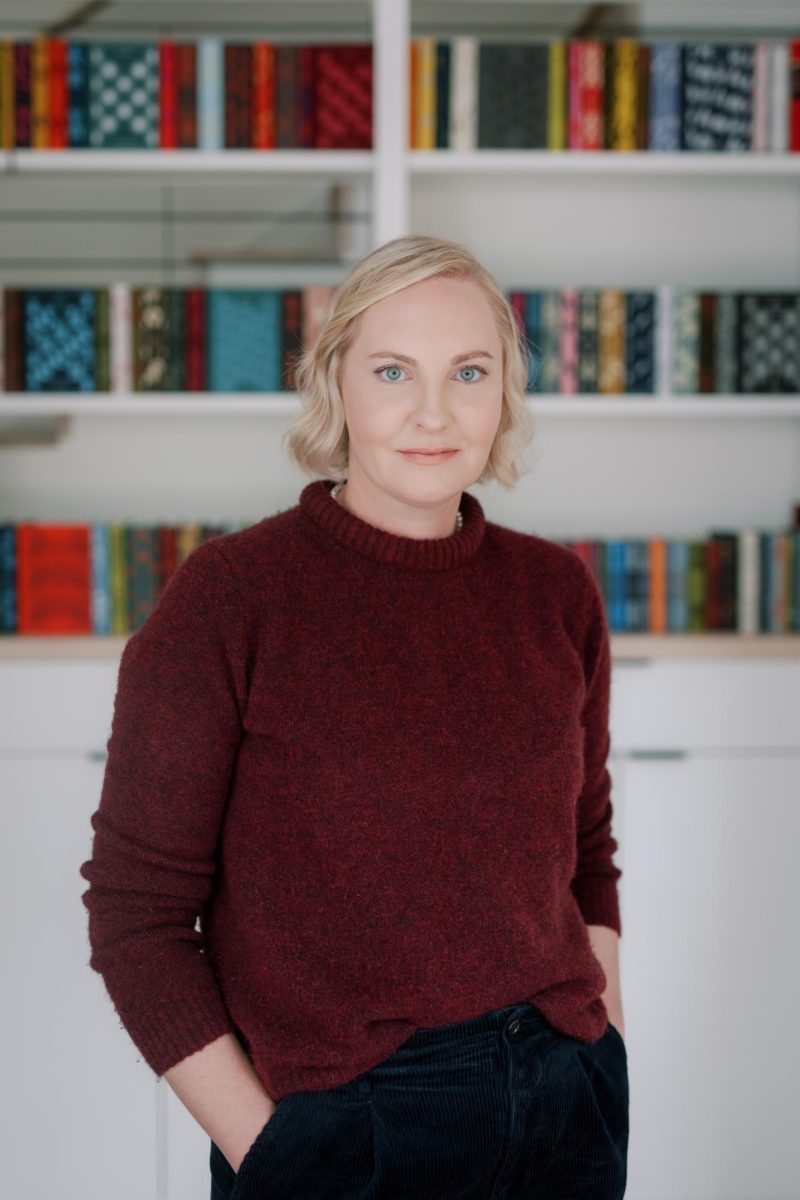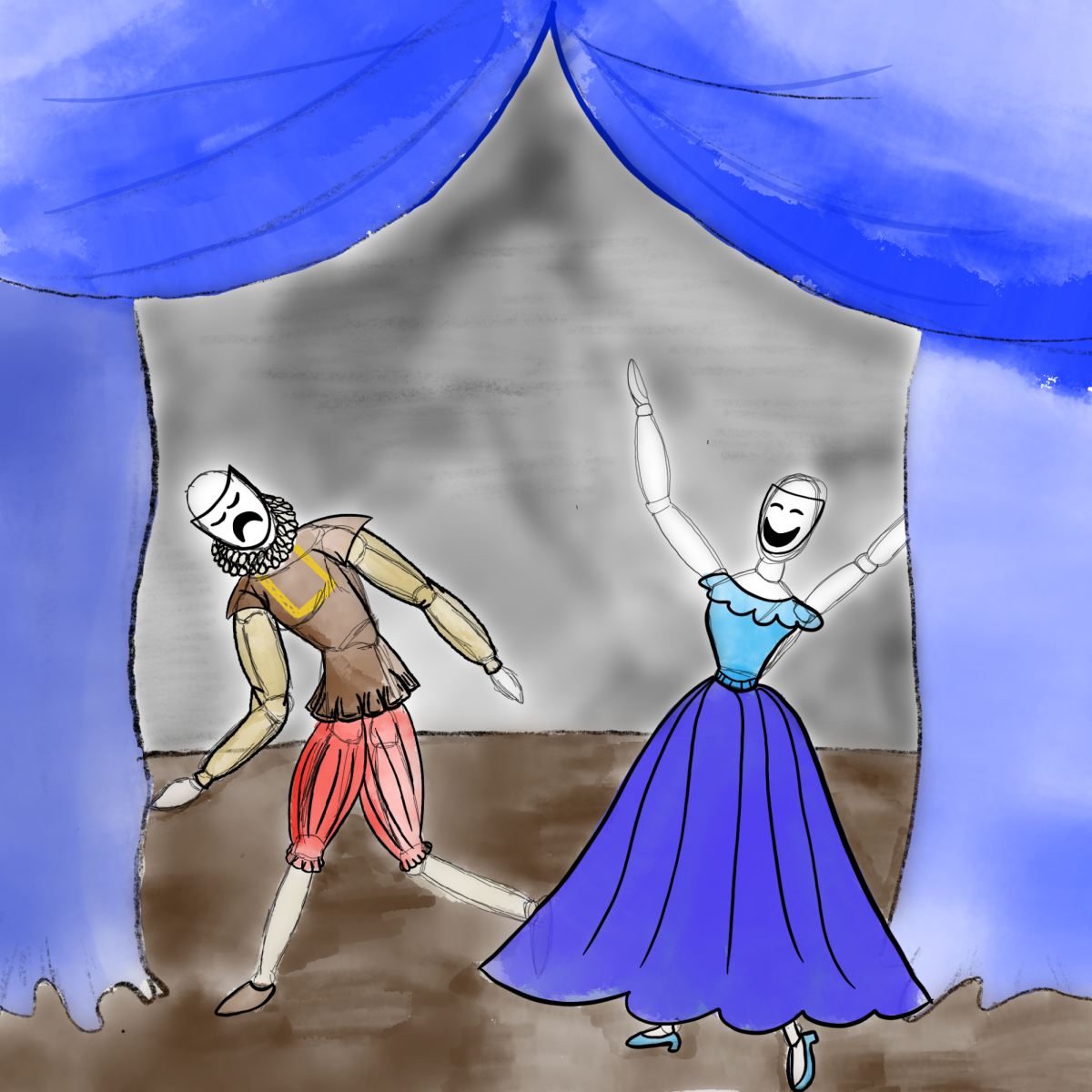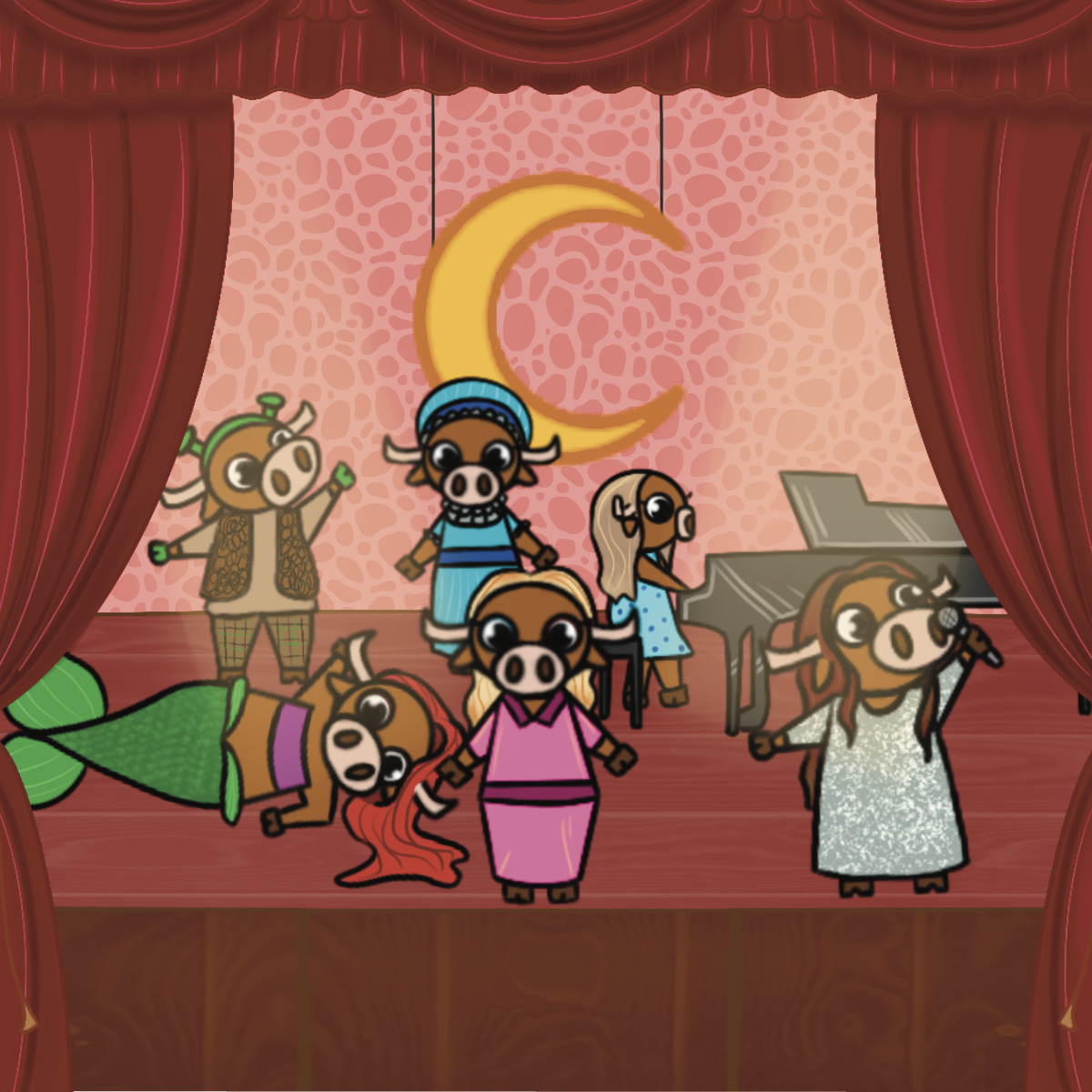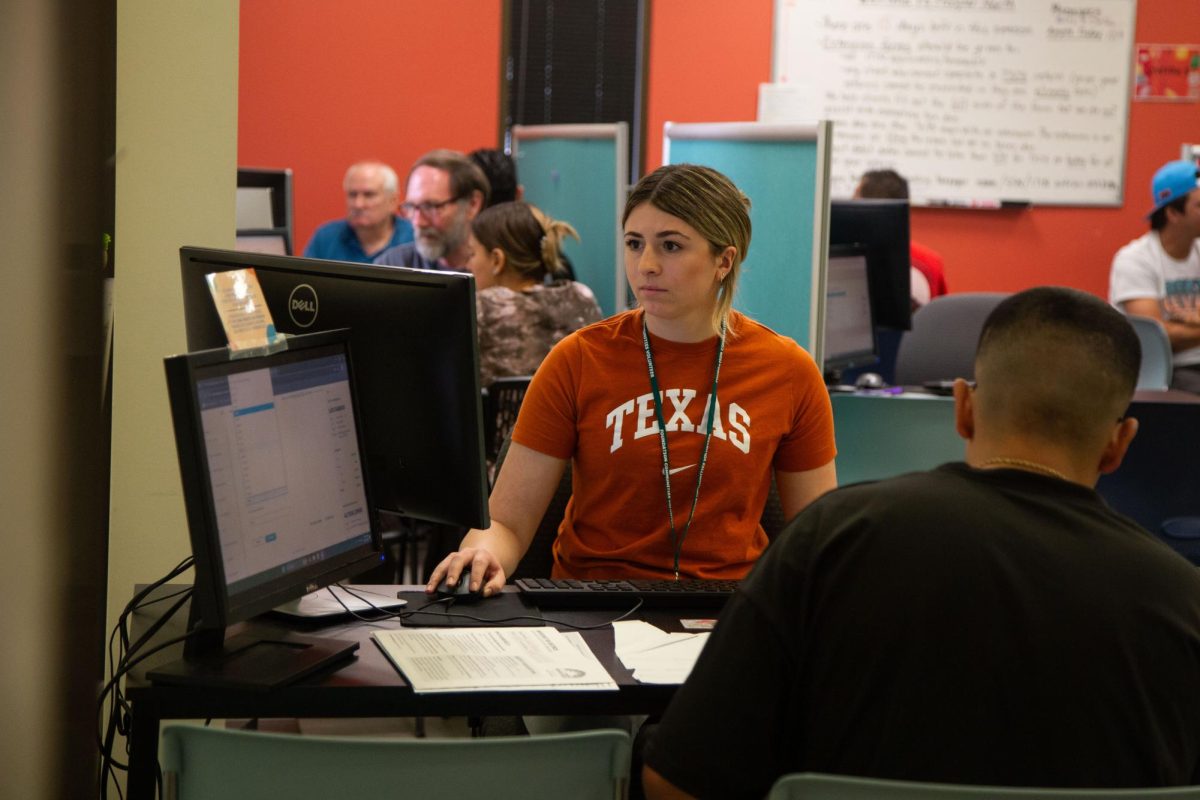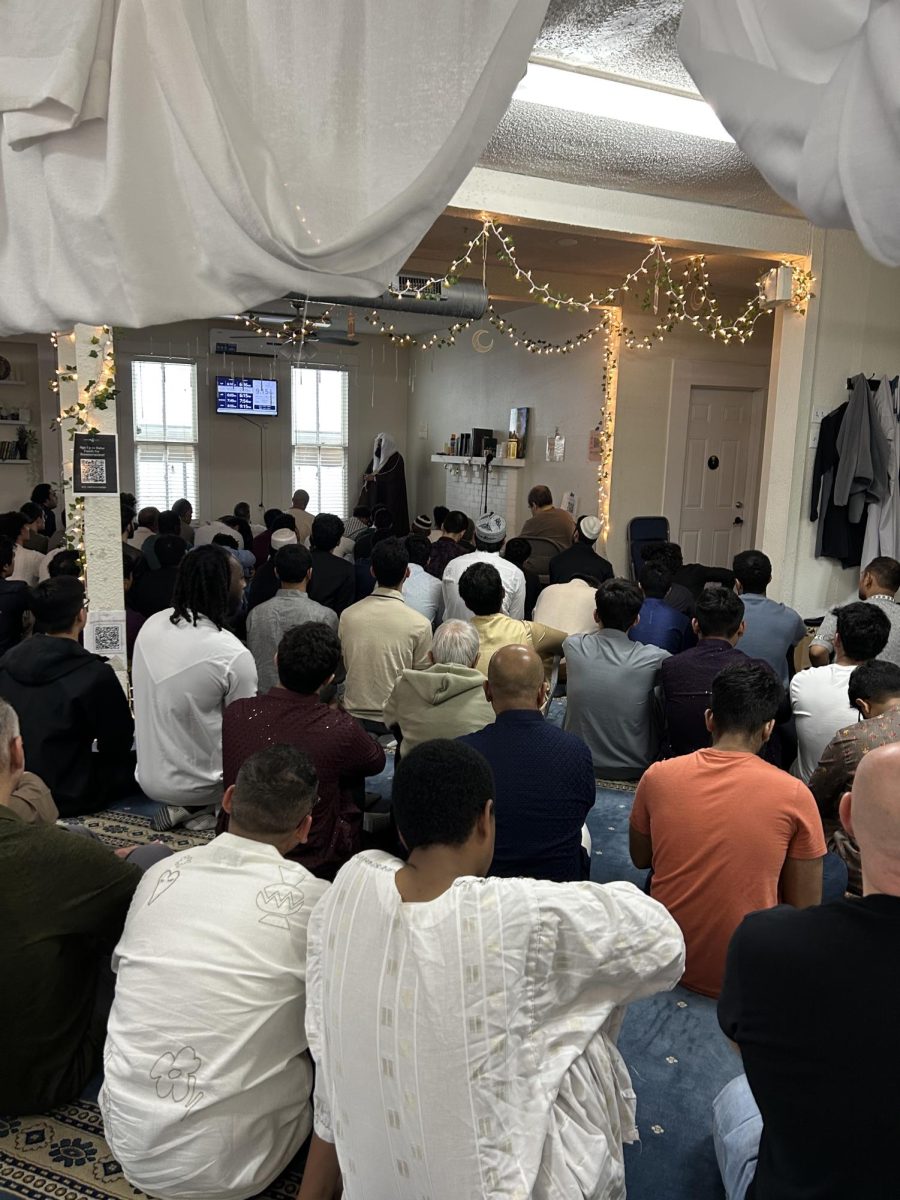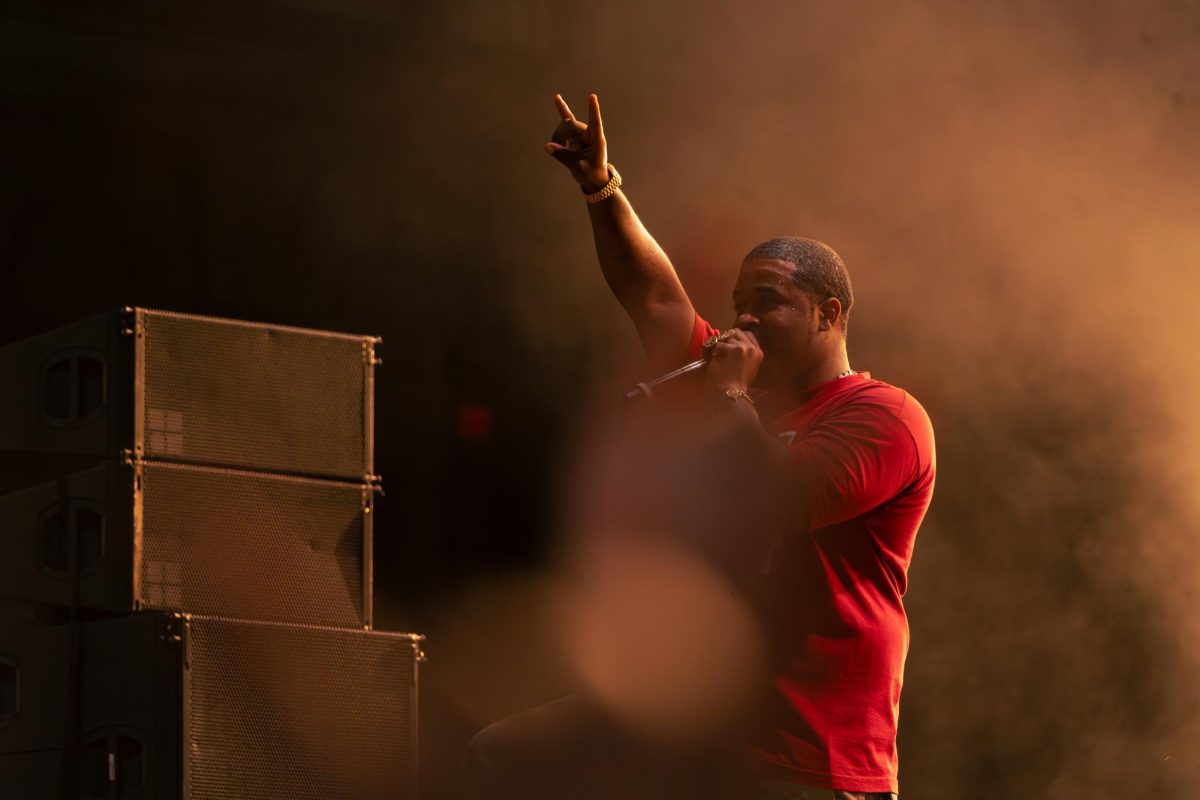The Quetzalcoatlus northropi skeletal reconstruction wasn’t the only thing in the air at the Texas Science & Natural History Museum on Thursday evening; love also filled the air as couples and friends enjoyed a night of education and romance.
On Thursday, the museum hosted a Fossils & Flowers Pre-Valentine’s event complete with the exploration of prehistoric love, access to after-hours exhibits and various activities such as Valentine card printing and the opportunity to hold a cockroach. The first of its kind, Fossils & Flowers comes after the Texas Science & Natural History Museum reopened in the fall of 2023.
“We’ve been experimenting with different event types since we reopened,” Events associate Ashley Simmel said. “I thought it would be fun to do something for Valentine’s Day so that we could get people in here for unique experiences, like building their own bouquet, and still do some educational-themed (activities).”
Additional activities included naming a bug from the UT entomology insect collection. Simmel, a history and international relations and global studies alumna, said she felt inspired by other museums that allowed guests to name cockroaches after ex-partners.
“We wanted to put a positive spin on it and have the option to name a cockroach after your ex, but also name a butterfly after your loved one, (adding) the positive connotation back with some of the insects,” Simmel said.
The event also featured a Kelsey Excelsior printing press from UT’s Harry Ransom Center, allowing guests to make valentines featuring a 305 million-year-old fossil from the museum’s collection. Guests were invited to explore the museum’s extensive fossil collection as Liam Norris, a Jackson School of Geoscience doctoral student and paleontologist, spoke about prehistoric love and the connections between science and romance.
“Romance throughout life’s history is very similar to how humans do it today, in that dancing, singing (and) beauty, are all things that animals have been doing for hundreds of millions of years,” Norris said.
Norris said many attributes of prehistoric creatures traced back to romance. For example, Norris said the Triceratops used its brightly-colored frill to attract mates, much like the feathers of a peacock.
“The forms on the Triceratops would be used in pushing matches between males to try and show off who was stronger,” Norris said. “(It’s) very similar behavior to what you might see on Sixth Street.”
Sociology senior Eva MacDonald and geology senior Brodie Surles said Norris’ insights into love and science were their favorite part of the event. Despite the less-than-traditional topic for a date night, MacDonald and Surles said the event was a lot of fun.
“I don’t think (science) is inherently romantic in and of itself,” MacDonald said. “Flowers and chocolate, that’s romantic, but if you can make something personal and romantic, that’s special.”

